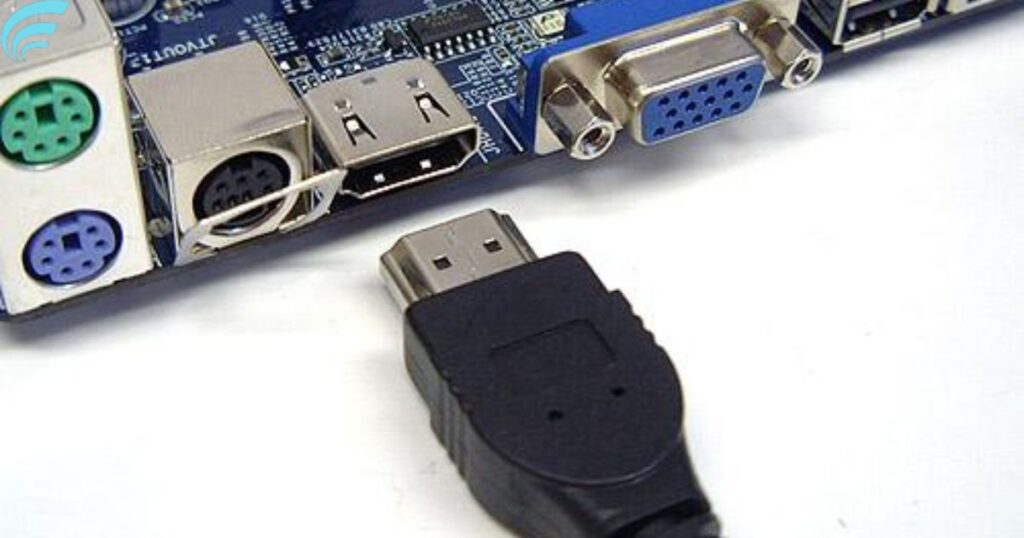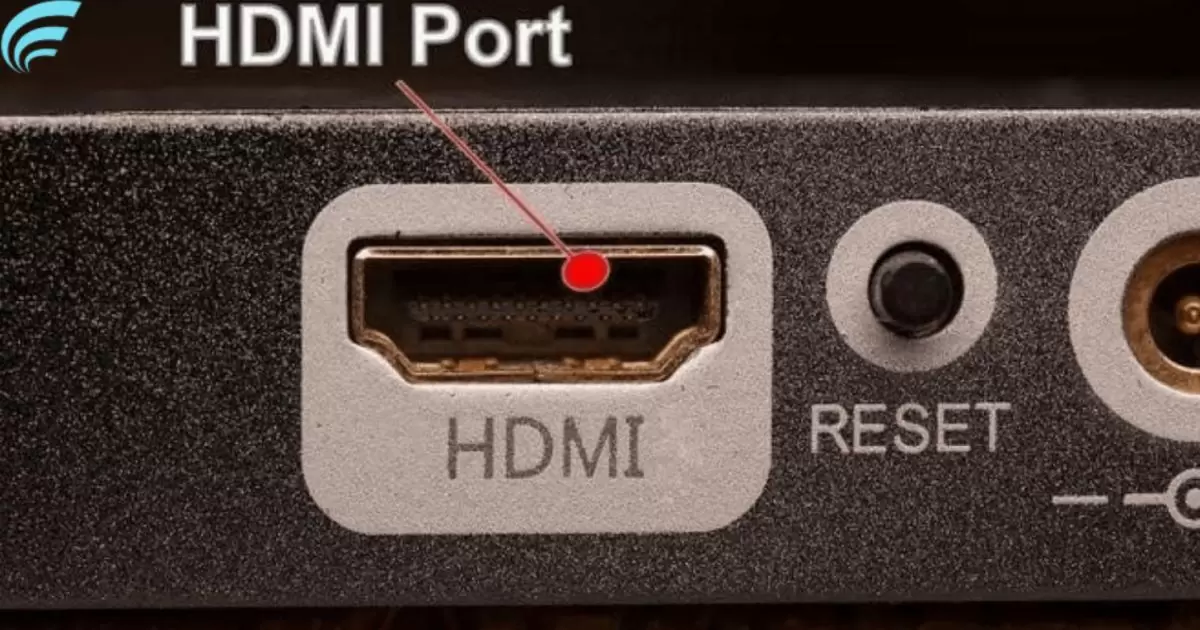The question of whether HDMI goes into the motherboard or graphics card pertains to the choice of which hardware component will handle the display output on a computer. When you connect HDMI to the motherboard, you utilize the integrated graphics, which are suitable for basic tasks. In contrast, connecting HDMI to the graphics card harnesses the power of dedicated graphics for superior performance in gaming, 3D applications, and high-resolution displays.
Are you ready to unlock the full potential of your computer’s graphics performance? Discover the answer to the burning question. Does HDMI go into the motherboard or graphics card? And make the right choice to enhance your computing experience. Whether you’re a casual user or a dedicated gamer, this decision can transform your display quality and capabilities. Let’s dive in and make your screen come to life.
The topic of Does HDMI Go Into a Motherboard or Graphics Card? revolves around the crucial decision of where to connect your HDMI cable. When you plug it into the motherboard, you’re utilizing the integrated graphics, which are ideal for everyday tasks. Conversely, connecting to the graphics card harnesses dedicated graphics power, delivering superior performance for gaming, 3D applications, and high-resolution displays.
Understanding the Basics
Before delving into the question of whether to connect the HDMI cable to the motherboard or the graphics card, it’s essential to understand the roles and functions of each component.
Motherboard
The motherboard is the central circuit board of your computer, connecting all major components and peripherals. It houses the CPU (Central Processing Unit), RAM (Random Access Memory), and other essential components. The motherboard typically has integrated graphics processing capabilities to provide basic display output.
Graphics Card
A graphics card, also known as a GPU (Graphics Processing Unit), is a dedicated hardware component responsible for rendering and processing graphics. It’s designed to handle complex 3D rendering tasks and is crucial for tasks like gaming, video editing, and 3D modeling. Graphics cards come with their own GPU and video memory, making them much more powerful than integrated graphics.
Factors to Consider
To determine whether to connect your HDMI cable to the motherboard or the graphics card, you should consider several key factors:
Display Output Capabilities
Integrated Graphics (Motherboard)
Integrated graphics are suitable for basic display needs.
They provide sufficient performance for office tasks, web browsing, and video playback.
However, they may struggle with demanding 3D games and graphics-intensive applications.
Dedicated Graphics Card
Dedicated graphics cards offer superior performance for gaming and professional applications.
They can handle high-resolution displays, 3D rendering, and multiple monitors with ease.
If you have a high-end graphics card, it’s generally the preferred choice for most tasks.
Graphics Intensity of Your Tasks
Consider the primary use of your computer and the graphic intensity of the tasks you perform. The decision to connect the HDMI cable to the motherboard or graphics card depends on this factor:
Gaming and 3D Applications
For gaming and 3D applications, a dedicated graphics card is almost always the better choice.
Integrated graphics may not provide the frame rates and visual quality required for an enjoyable gaming experience.
Office and Browsing
For office tasks, web browsing, and streaming videos, integrated graphics are sufficient.
You can use the motherboard’s HDMI port in such scenarios without sacrificing performance.
Available Ports
Another factor to consider is the number of available HDMI ports on your computer. Some systems offer multiple HDMI ports, which can be connected to different devices simultaneously.
Motherboard
The motherboard typically provides one HDMI port for integrated graphics output.
If you connect your HDMI cable to the motherboard, you might not have the option to connect additional displays.
Graphics Card
Graphics cards often come with multiple HDMI ports.
If you have a graphics card with multiple HDMI ports, you can connect multiple displays for an extended desktop or multi-monitor setup.
BIOS and UEFI Settings
In some cases, the ability to use integrated graphics alongside a dedicated graphics card depends on the settings in your computer’s BIOS (or UEFI, the modern equivalent). You may need to configure the BIOS/UEFI settings to enable both graphics sources.
Motherboard
Some motherboards allow you to use integrated graphics alongside a dedicated graphics card.
This can be useful for troubleshooting or using a multi-monitor setup where each source drives a different display.
Graphics Card
Dedicated graphics cards are typically set as the primary source for graphics output.
Depending on the card and motherboard, you may need to disable integrated graphics in the BIOS or UEFI to use the graphics card exclusively.
Driver and Software Considerations
Your choice of whether to connect the HDMI cable to the motherboard or the graphics card may also depend on driver and software considerations.
Integrated Graphics
Integrated graphics generally don’t require additional drivers beyond the basic system drivers provided by the operating system.
They are well-suited for plug-and-play setups.
Dedicated Graphics Card
A graphics card typically requires a specific driver installation to unlock its full potential.
Up-to-date graphics drivers are crucial for optimal performance, especially in gaming and professional applications.
How to Connect HDMI to the Motherboard

If you decide to connect your HDMI cable to the motherboard, follow these steps:
Power Off: Turn off your computer and unplug it from the electrical outlet.
Locate the HDMI Port: Identify the HDMI port on the rear or back panel of your computer. It should be near the USB and other ports.
Connect HDMI Cable: Plug one end of the HDMI cable into the HDMI port on your computer’s motherboard.
Connect Other End: Plug the other end of the HDMI cable into your monitor, TV, or other display device.
Power On: Turn on your computer and the connected display device.
Select Input Source: On your display device, select the HDMI input source that corresponds to the HDMI cable you connected.
Your computer should now be able to display on the chosen monitor or TV.
How to Connect HDMI to the Graphics Card
If you opt to connect your HDMI cable to the graphics card, follow these steps:
Power Off: Turn off your computer and unplug it from the electrical outlet.
Locate Graphics Card Ports: Identify the HDMI port on the rear panel of your graphics card. Graphics card ports are typically lower on the back panel than motherboard ports.
Connect HDMI Cable: Plug one end of the HDMI cable into the HDMI port on your graphics card.
Connect Other End: Plug the other end of the HDMI cable into your monitor, TV, or other display device.
Power On: Turn on your computer and the connected display device.
Select Input Source: On your display device, select the HDMI input source corresponding to the HDMI cable you connected.
By connecting the HDMI cable to the graphics card, you’ll utilize the full power of your dedicated GPU for superior graphics performance.
Troubleshooting and Tips
When facing issues with your HDMI connection, troubleshooting and tips can come to the rescue. By following these simple steps, you can quickly identify and resolve problems, ensuring a smooth and enjoyable viewing experience. Whether it’s a minor glitch or a more complex issue, these troubleshooting techniques can save the day and get your display back on track.
No Display Output
If you encounter a situation where there’s no display output after connecting your HDMI cable, consider the following troubleshooting steps:
Ensure both the computer and the display device are powered on.
Verify that the HDMI cable is securely connected to both the computer and the display device.
Check the input source on your display device and make sure it’s set to the HDMI port you connected the cable to.
BIOS/UEFI Settings
If you have both integrated graphics and a dedicated graphics card and experience issues, check your BIOS/UEFI settings:
Enter the BIOS/UEFI by pressing the relevant key during system startup (common keys include Del, F2, or F12).
Look for a setting related to graphics output or the primary display adapter.
Select the graphics card as the primary display source if it’s not already set as such.
Driver Installation
For dedicated graphics cards, ensure you’ve installed the latest drivers from the manufacturer’s website. Outdated or missing drivers can lead to display issues and reduced performance.
Monitor Settings
Check your monitor settings to ensure that they are configured to display the HDMI input source properly, especially when the monitor plugs Into graphics card. Sometimes, a monitor may need to be set to the correct input source manually to ensure seamless connectivity and an optimal viewing experience.
HDMI Cable Quality
HDMI cable quality is a critical consideration when connecting your devices. The quality of the cable can significantly impact signal clarity and reliability, ensuring you get the best possible viewing and audio experience. To illustrate the importance of HDMI cable quality, here’s a table comparing a standard cable to a high-quality cable:
| Aspect | Standard HDMI Cable | High-Quality HDMI Cable |
|---|---|---|
| Signal Clarity | Potential for signal loss | Consistently clear |
| Durability | Prone to wear and tear | Durable and long-lasting |
| Compatibility | May have limited compatibility | A wider range of compatible devices |
| Length Options | Limited-length options | Available in various lengths |
| Price | Affordable | Higher initial cost but cost-effective in the long run |
| Audio and Video Quality | Average | Enhanced audio and video quality |
Investing in a high-quality HDMI cable can make a noticeable difference in your overall entertainment experience, ensuring that you enjoy the best possible picture and sound quality.
Conclusion
The choice of whether to connect your HDMI cable to the motherboard or graphics card is a pivotal decision that impacts your computing experience. Understanding the roles of both components and considering your specific needs is essential to making the right selection. If you’re a casual user handling everyday tasks, the motherboard’s HDMI port is a practical choice. However, for gamers, content creators, or those engaging in graphics-intensive work, the graphics card’s HDMI port offers the performance and capabilities required for a seamless experience.
So, does HDMI go into the motherboard or graphics card? The answer depends on your purpose and what you want to achieve. By considering factors like display output capabilities, the nature of your tasks, available ports, BIOS settings, and driver requirements, you can make an informed choice. Ultimately, whether it’s gaming, content creation, or office work, your decision will play a crucial role in shaping your computer’s performance and visual quality.
FAQs
Can I connect HDMI to both the motherboard and graphics card simultaneously?
No, you can typically connect HDMI to either the motherboard or the graphics card, not both at the same time.
Do all motherboards have integrated graphics?
No, not all motherboards have integrated graphics. Some models are designed for use with dedicated graphics cards only.
What if my graphics card has multiple HDMI ports?
If your graphics card has multiple HDMI ports, you can connect multiple displays for extended desktop or multi-monitor setups.
Why do I need to update graphics card drivers?
Updating graphics card drivers ensures optimal performance and compatibility with the latest games and software.
What should I do if I have no display output after connecting HDMI?
If you experience no display output, check the power status, cable connections, input source on your monitor, and your graphics card settings. Troubleshoot accordingly to resolve the issue.











